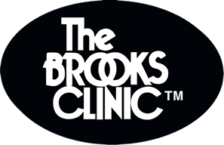Chronic pain isn’t easy to live with. However, there are steps you can take on your own to manage your pain and lead a more active and rewarding life. Pain management is often an integral part of wellness, and determining if your pain can be eliminated or reduced with the right treatment modalities.
Here are 12 do-it-yourself tips that pain management experts recommend:
1. Find a relaxation technique that’s right for you. It might be yoga or tai chi, or diaphragmatic breathing – just as long as it helps calm you. Keeping calm and relaxed in the face of adversity and distress can play a big role in alleviating your chronic pain.
2. Keep moving despite your pain. Activity and exercise stimulates endorphins, brain chemicals that help improve your mood while also blocking pain signals. Regular exercise also strengthens your muscles and loosens tight joints, helping prevent re-injury and further pain. It’s a good way to lift your spirits and clear your mind, and also helps you avoid gaining excess weight that can add to your pain.
3. Eat foods that prevent inflammation. Be sure to include a variety of fruits and vegetables in your diet as many are naturally anti-inflammatory. Leafy green vegetables also contain carotenoids, which act as antioxidants within the body and protect against cell damage that can cause pain. Foods rich in Omega-3 fatty acids – like salmon, spinach, walnuts, wild rice, eggs, and Brussels sprouts – have been found to help curb rheumatoid and non-rheumatoid arthritis joint pain and stiffness.
4. Control or eliminate stress in your life. Negative feelings like depression, anxiety, and anger can increase your body’s sensitivity to pain. The less stress you allow to affect your mind and body, the less pain you’ll experience.
5. Take deep, slow breaths. Measured breathing helps deactivate your body’s fight-or-flight response to pain. Not only does it helps relax your muscles, but deep abdominal breathing encourages full oxygen exchange which can slow your heartbeat and lower or stabilize your blood pressure.
6. Meditate. According to a Canadian research study, people who meditate regularly have thicker areas of the brain’s cortex, the part of the brain that affects pain sensitivity. A few minutes of calm each day can help boost your pain tolerance.
7. Focus on sensual stimulation. Visualizing a pleasant scene, listening to soothing music or sounds, inhaling the scent of oil and candles can all be a relaxing experience and a welcome distraction from pain.
8. Find other enjoyable distractions. Hobbies, social activities, even texting can take your mind off pain for hours at a time.
9. Treat yourself to a massage. Massage can relieve tension and reduce stress in those with chronic back and neck pain.
10. Set realistic goals. Moderate the amount of stress you put on your body to reduce aches and pains. For example, start slowly with exercise, then resolve to increase your routine gradually. Don’t push yourself too much, too soon.
11. Drink less alcohol. It’s hard enough getting rest and sleep with pain. Regular alcohol consumption will only make your sleep problems worse.
12. Don’t smoke. Smoking can worsen painful circulation problems and increase your risk of heart disease and cancer.
There are many other ways to manage chronic pain, not the least of which is consulting with a pain management expert. Finding the right interventional pain management clinic in Oklahoma can make all the difference. To learn more about your pain relief options, call The Brooks Clinic at (405) 400-0877or schedule an appointment online.




